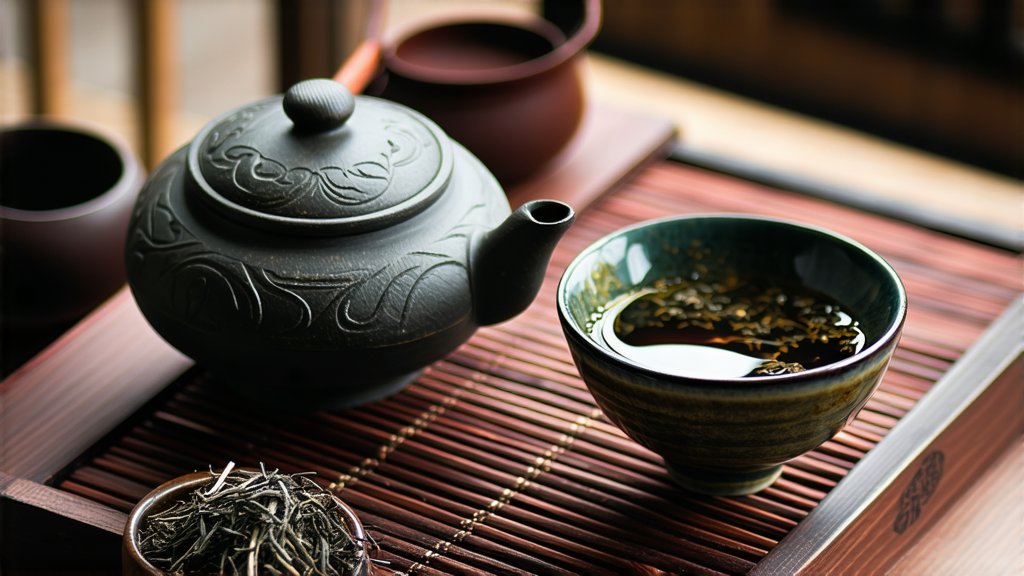
Pu-erh tea, a unique and revered variety within the vast spectrum of Chinese black teas, offers a captivating narrative that intertwines history, culture, and meticulous craftsmanship. This article delves into the rich heritage, diverse types, intricate production process, and the art of appreciating this extraordinary tea from China's Yunnan province.
A Glimpse into History
The origins of Pu-erh tea can be traced back over a millennium to the ancient caravan routes of the Tang Dynasty (618-907 AD), which facilitated trade between China and Tibet, known as the Tea Horse Road. It was during these times that the unique fermentation process of Pu-erh began to evolve, distinguishing it from other Chinese teas. By the Ming Dynasty (1368-1644 AD), Pu-erh had gained significant prominence, particularly in the imperial courts and among the elite classes.
Varieties of Pu-erh Tea
Pu-erh tea is broadly classified into two categories based on processing methods: Raw (Sheng) Pu-erh and Ripe (Shou) Pu-erh.
-
Raw (Sheng) Pu-erh: This type undergoes natural aging and oxidation over time. The sun-dried leaves are often pressed into various forms such as cakes, bricks, or tuochas (nestles), allowing them to mature gradually. Raw Pu-erh is prized for its complex flavor profile that evolves with age, developing earthy, floral, and sometimes fruity notes.
-
Ripe (Shou) Pu-erh: This variety undergoes a post-fermentation process known as "wet piling" or "wo dui," where piles of tea leaves are kept moist and warm to accelerate microbial activity. This results in a faster maturation process, typically taking months rather than years. Ripe Pu-erh boasts a smoother, mellower taste with hints of wood, dried fruits, and a distinctive 'earthy' aroma.
The Art of Pu-erh Production
The journey from leaf to cup involves several stages, each contributing to the final character of the tea:
-
Picking: Only the tender young leaves and buds are selected, usually during the spring harvest when they are most flavorful and nutrient-rich.
-
Withering: Freshly picked leaves are spread out to wilt under the sun or in shade, reducing moisture content and softening the plant cells for rolling.
-
Rolling: Leaves are rolled into tight spirals, breaking cell walls to release enzymes necessary for fermentation.
-
Fermentation (for Sheng): For Raw Pu-erh, this step involves minimal intervention, allowing natural enzymatic reactions and microbial growth to occur slowly over years or even decades.
-
Wet Piling (for Shou): In contrast, Ripe Pu-erh undergoes controlled fermentation in large piles, where temperature, humidity, and microbial activity are carefully monitored to ensure consistent quality.
-
Drying & Pressing: After fermentation, the leaves are dried and may be pressed into traditional shapes or left loose. Compressed forms not only preserve the tea but also enhance its aging potential.
-
Aging: Both Raw and Ripe Pu-erh benefit from proper storage conditions—cool, dry environments away from strong odors—to develop their full flavor potential over time.
The Art of Tasting Pu-erh Tea
To truly appreciate Pu-erh tea, one must engage in a mindful tasting ritual that emphasizes observation, aroma, taste, and aftertaste:
-
Warming the Teaware: Begin by rinsing your teapot and cups with hot water to cleanse them and maintain the tea's temperature.
-
Infusion: Use boiling water (around 95-100°C/203-212°F) for the first few infusions, especially for aged Raw Pu-erh or compressed forms. For younger or more delicate teas, slightly cooler water may be preferred. Steep for about 5-10 seconds initially, gradually increasing steeping time for subsequent infusions.
-
Appearance & Aroma: Observe the color of the liquor, which can range from bright amber for young Sheng to deep red-brown for aged Shou. Inhale the evolving aromas released during each infusion, from fresh grassiness to mature woodiness.
-
Tasting: Sip slowly, allowing the tea to coat your palate. Notice the balance between bitterness, astringency, sweetness, and umami flavors. Pay attention to how these elements harmonize and evolve with each successive brew.
-
Aftertaste & Mouthfeel: Assess the length and quality of the aftertaste, which should linger pleasantly without astringency. A good Pu-erh leaves a clean, refreshing feeling in the mouth, inviting further exploration.
In conclusion, Pu-erh tea is not merely a beverage; it embodies centuries of tradition, cultural significance, and artisanal skill. Its complexity and depth make it a subject of endless fascination for tea enthusiasts worldwide. Whether you're drawn to the raw vitality of Sheng or the mellow sophistication of Shou, exploring Pu-erh is embarking on a sensory journey through time and terroir.